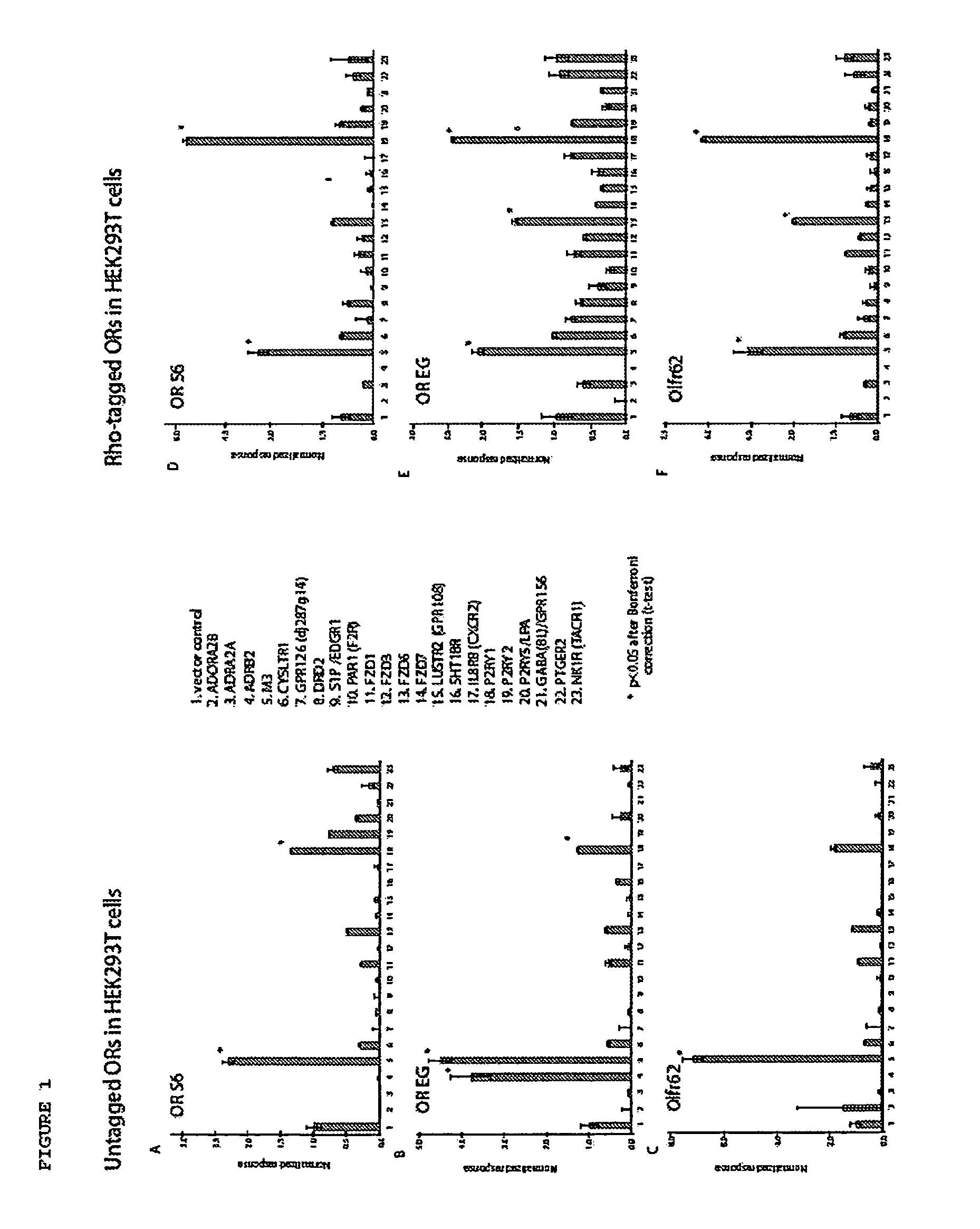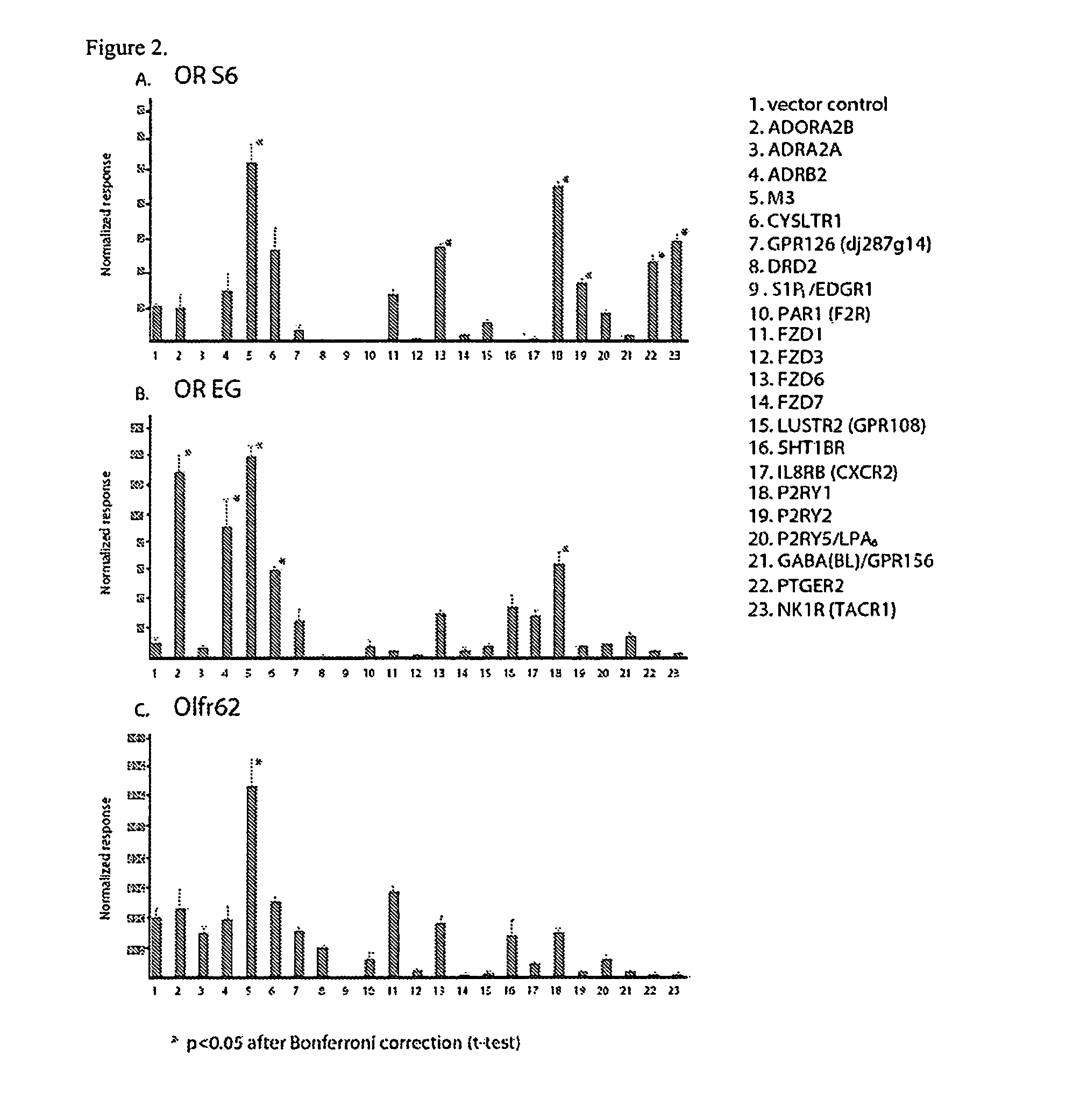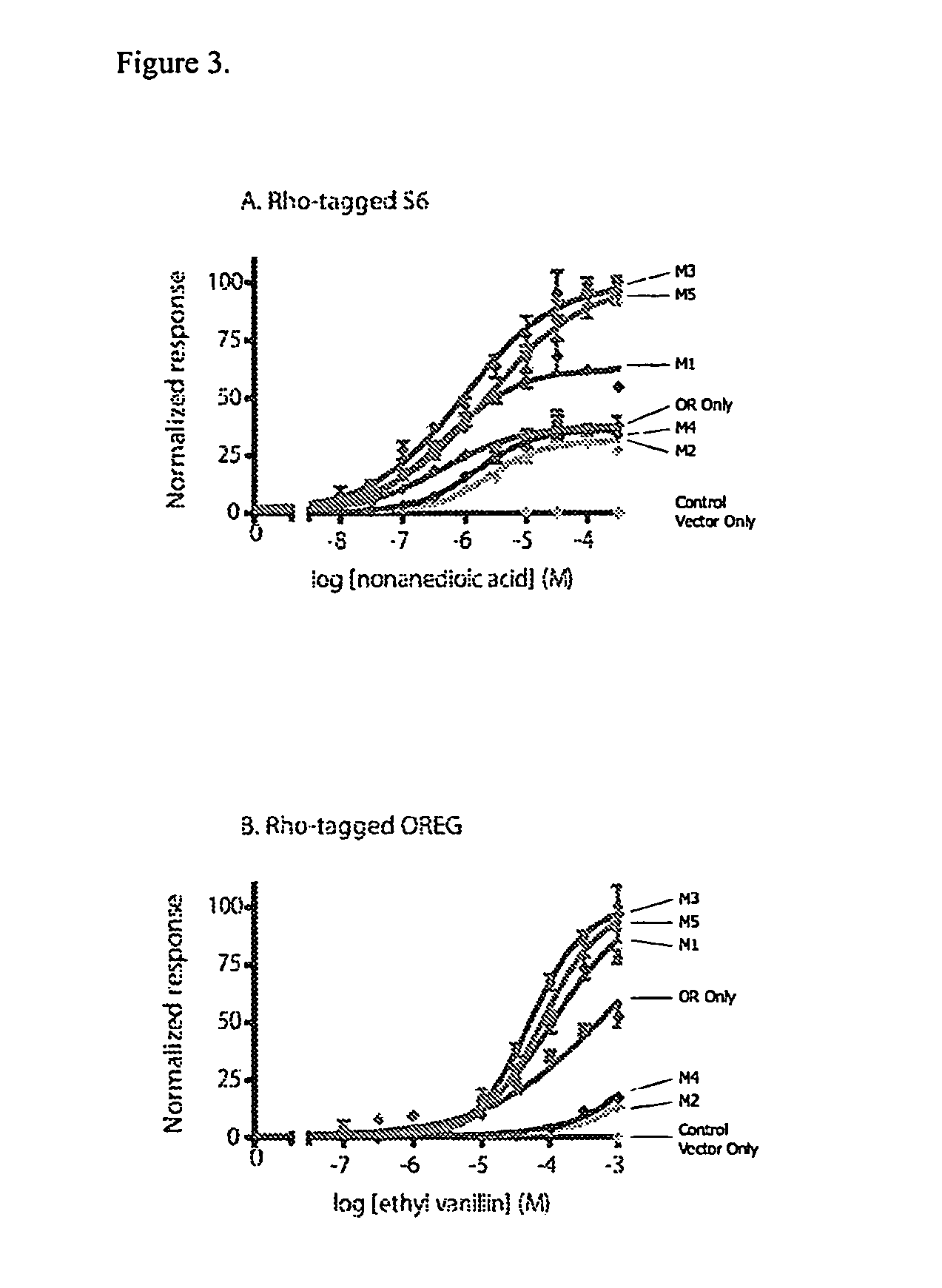Compositions and methods for enhancing odorant receptor activity
a technology of odorant receptor and enhancing odor, which is applied in the field of polypeptides capable of modulating the activation of odorant receptor, can solve the problems of little knowledge of selectivity and inability to reliably promote cell surface expression of modifications, and achieve the effects of enhancing cell surface expression of ors, and enhancing the potency and efficacy of odor-elicited responses
- Summary
- Abstract
- Description
- Claims
- Application Information
AI Technical Summary
Benefits of technology
Problems solved by technology
Method used
Image
Examples
examples
[0357]The following examples are provided to demonstrate and further illustrate certain some embodiments of the present invention and are not to be construed as limiting the scope thereof.
example i
[0358]This example shows that coexpression of a non-OR GPCR increases OR activation.
[0359]To identify a non-OR GPCR that interacts with ORs and modulates OR signaling, potential receptors were screened from a candidate library that consists of non-chemosensory GPCRs previously shown to be expressed in the olfactory epithelium using quantitative RT-PCR analysis (see, e.g., J. B. Regard, I. T. Sato, S. R. Coughlin, Cell 135, 561 (Oct. 31, 2008); herein incorporated by reference in its entirety). To determine whether the expression of these GPCRs affect the function of ORs, each of the GPCRs were coexpressed with one of three untagged (FIGS. 1A, 1B and 1C) or N-terminal rhodopsin tagged (Rho-tagged) (FIG. 1D, 1E, 1F) ORs: OR-S6 (FIG. 1A and FIG. 1D), OR-EG (FIGS. 1B and 1E), and Olfr62 (FIGS. 1C and 1F) in HEK293T cells in the presence of OR-trafficking proteins RTP1S and an olfactory GTP / GDP exchange factor Ric-8b (see, e.g., L. E. Von Dannecker, A. F. Mercadante, B. Malnic, Proc Natl...
example ii
[0362]This example demonstrates that M3 is expressed in olfactory sensory neurons (OSNs). To determine whether M3 is expressed by olfactory sensory neurons (OSNs), mRNA in situ hybridizations were performed on sections of the olfactory epithelium. It was found that M3 is expressed in the OSNs, which can be distinguished as the cell population that strongly expresses the Olfactory Marker Protein (OMP) (FIG. 4A, 4B, 4C). Furthermore, immunostaining was performed on sections of the olfactory epithelium to assess whether M3 protein expression patterns are colocalize with the olfactory cilia where ORs are localized. Consistent with the idea that M3 plays an important role in olfactory signaling, M3 signal was localized at the cilia in the olfactory epithelium, with similar localization as adenylyl cyclase III (FIG. 4D, 4E, 4F, 4G). In marked contrast, M1 and M5, as well as M2, were not well-expressed at the olfactory cilia (FIG. 4E, 4F) (see, also, FIG. 5). While not limited to a particu...
PUM
 Login to View More
Login to View More Abstract
Description
Claims
Application Information
 Login to View More
Login to View More - R&D
- Intellectual Property
- Life Sciences
- Materials
- Tech Scout
- Unparalleled Data Quality
- Higher Quality Content
- 60% Fewer Hallucinations
Browse by: Latest US Patents, China's latest patents, Technical Efficacy Thesaurus, Application Domain, Technology Topic, Popular Technical Reports.
© 2025 PatSnap. All rights reserved.Legal|Privacy policy|Modern Slavery Act Transparency Statement|Sitemap|About US| Contact US: help@patsnap.com



